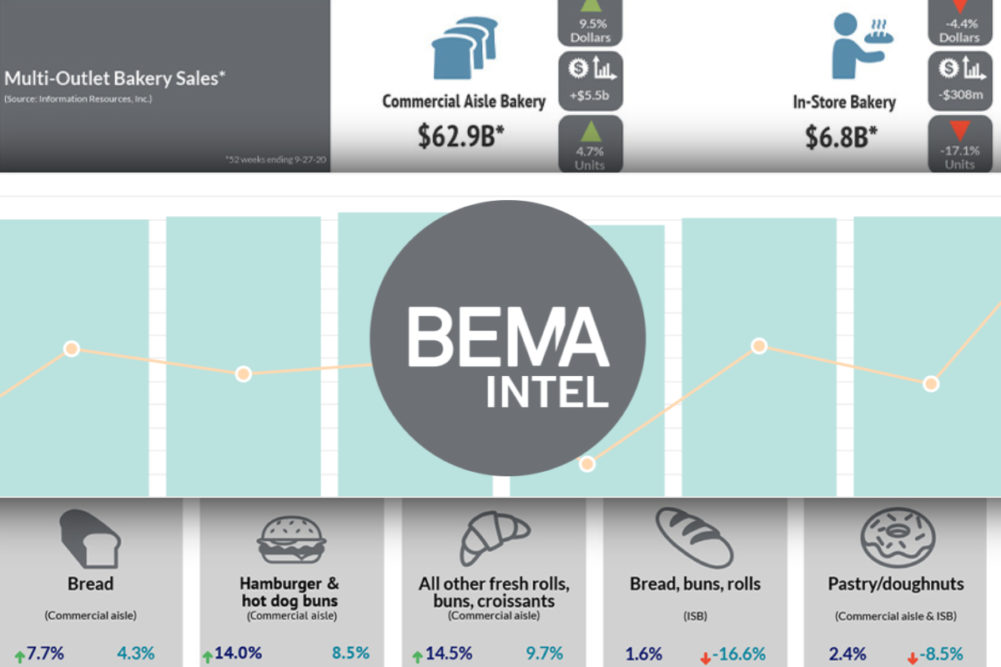 KANSAS CITY — Few, if any, manufacturing industries consume data more voraciously than grain-based foods. It is because risk management is in the DNA of the grain, flour milling and baking industries that grain and oilseeds futures markets are so widely used for hedging and such close attention is paid to crop development and production, demand trends and myriad other statistical sources.
KANSAS CITY — Few, if any, manufacturing industries consume data more voraciously than grain-based foods. It is because risk management is in the DNA of the grain, flour milling and baking industries that grain and oilseeds futures markets are so widely used for hedging and such close attention is paid to crop development and production, demand trends and myriad other statistical sources.
Still, different branches of grain-based foods have different needs when it comes to data. Executives of baking equipment companies, for instance, do not hang on every small swing in wheat futures markets the way a grain exporter would.
Even if they are not glued to monitors all day tracking market quotes, equipment manufacturers and ingredient suppliers need a clear picture of the economic health and prospects of their baking customers. Perversely, the limitless ocean of data related to grain-based foods that is available may make it more, not less, difficult for allied suppliers to identify and use the information effectively.
Against this backdrop, an interactive data visualization platform just launched by the Baking Equipment Manufacturers and Allieds provides users with a valuable “high-resolution” image of the state of baking and its outlook.
Dubbed BEMA Intel, the aggregation of data offers a quick but remarkably deep look into different measures that relate to the well-being of baking. The platform was drafted by a committee of equipment manufacturers; ingredient suppliers; BEMA leadership; and the media, including the editor of Milling & Baking News; with professional stewardship from Cypress Research Associates.
Each quarter, users of BEMA Intel will have at their fingertips an assessment of the baking industry with a five-element dashboard — two industry outlook measures based on equipment manufacturer surveys and quarterly changes for bakery product sales (dollar and unit volume changes), baked food prices and share prices for publicly-traded grain-based foods companies.
A central element of the platform is results of two survey questions posed to BEMA members — asking whether the baking industry equipment outlook is positive, negative or neutral and whether the survey participants’ equipment bookings during the quarter were up, down or steady from the most recent quarter. The questions were developed striking a careful balance to provide a valuable industry economic indicator without probing too intrusively into respondents’ businesses.
Behind the dashboard, BEMA’s 200-plus member companies will be able to take a deeper dive into these and additional data. Figures published in the initial BEMA Intel offer insights into the dramatic dynamics at play during the first months of the pandemic. For example, a chart on baked food prices shows CPI gains of around 3.5% in the months of April through August versus a year earlier, well above the annual rate of gain of roughly 1.5% over the previous two years. While appearing to show the industry was successful in recouping costs during the first few months of COVID-19, a comparison with all food at home shows bakers’ ability to raise prices fell considerably shy of overall food price inflation, which averaged more than 4.6% during the same months.
Sales data for July-September, sourced from Information Resources, Inc., showed strong sales in most categories. A telling exception was data on bread, buns and rolls sold from in-store bakeries (ISB). While unit volume during the third quarter plunged 28%, dollar sales came close to holding steady — down 4.4%. The gaping disparity between dollar sales and volume apparently showed a massive change in product mix at ISB associated with a drop in traffic during the pandemic. With fewer shoppers in supermarkets overall, and with traffic patterns shifting in favor of center aisles rather than the perimeter, ISB operators reduced the number of stock-keeping units, retaining far fewer, higher-priced items.
The data BEMA Intel offers uses both lagging and leading indicators of the health of the baking industry. The platform will, in the words of one committee member, help equipment suppliers “connect the dots” necessary to keep their businesses healthy and positioned as invaluable resources to their baking customers.






